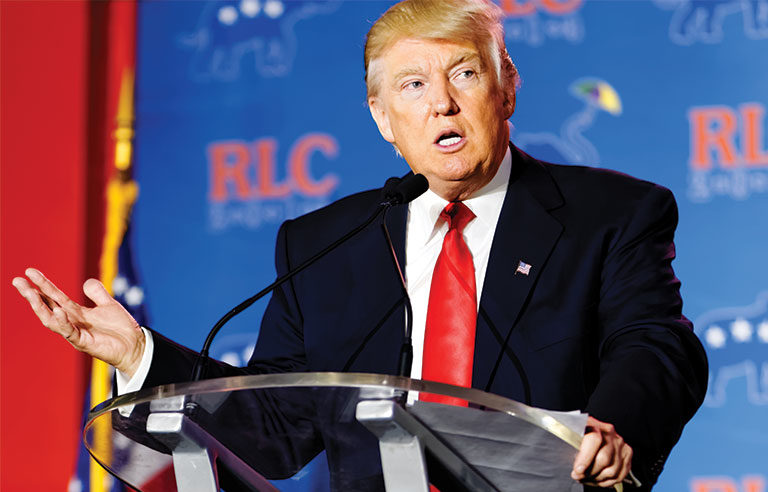OSHA under Trump: A closer look
Legal experts are predicting significant changes for worker safety regulation under the new administration

A new presidential administration almost certainly will mean a new direction for OSHA, legal experts agree. Regulations could be undone. Funding could decrease. Strategies for worker safety could shift 180 degrees.
How soon will changes arrive? Which objectives will take priority? Who will next be chosen to lead OSHA? Those decisions ultimately lie with President Donald Trump and his team as they settle into the White House.

On the campaign trail, Trump touted his belief in smaller government with fewer rules and more freedoms. He vowed to eliminate two regulations for every new one enacted. He promised to ease the burdens on big businesses and blue-collar workers alike by stimulating the economy and creating jobs.
Workplace safety did not take center stage as a campaign issue for Trump or any other presidential candidate. But Trump’s limited-regulation stance, coupled with his experience in construction and other industries, suggest to some that he will steer OSHA more toward compliance assistance and away from enforcement.
Trump offers the unprecedented case of an incoming commander-in-chief who has been fined multiple times by OSHA for safety violations at his worksites. His businesses also have relied on contractors and subcontractors who have been hit with major penalties. One of his contractors was fined $104,000 after a construction worker fell 42 stories to his death in 2008 at the Trump SoHo hotel condominium in New York City. The penalty was later reduced to $44,000.

Once Trump turns his attention toward OSHA, what specifically could change?
Regulations in jeopardy
The injury and illness electronic recordkeeping rule could be among the first items that Trump targets, according to Conn. The rule requires many employers to electronically submit injury and illness data, which may then be published on OSHA’s website. Anti-retaliation protections also are included in the rule, which prohibits employers from discouraging workers from reporting an injury or illness.
The rule has drawn sharp criticism from some employers, who claim it is burdensome and unnecessary. In July, eight industry groups – including the National Association of Manufacturers and Associated Builders and Contractors – filed a legal challenge to block the rule, claiming the anti-retaliation provisions unlawfully banned or limited safety incentive programs and post-incident drug testing. A judge denied the motion in November.
“I could easily see, at the very least, a Trump administration curbing the publishing of that data,” Conn said. “And the other side of that same rule is the anti-retaliation elements that would prohibit some post-incident, post-injury drug testing and safety incentive programs. I could see that rule being curbed.”
A formal rulemaking process often requires years to enact change, but Trump could turn to faster, existing methods. OSHA could issue new guidance documents or letters of interpretation that reopen the door for drug testing and safety incentive programs, for example. Or the administration could pursue a budget rider that says OSHA shall not spend any funds on implementing the electronic recordkeeping database or in collecting or reviewing employers’ injury and illness data submitted pursuant to the rule – effectively invalidating its existence. Depending on the timing, some rules could be changed under the Congressional Review Act.
The silica rule published in March 2016 could be on the chopping block, Conn said, but as of press time it is set to go into effect in the construction industry in June and for general industry in 2018. The rule reduces the permissible exposure limit for respirable crystalline silica to 50 micrograms per cubic meter of air averaged during an 8-hour shift – half the previous limit for general industry and five times lower than the previous limit for construction.
Also in jeopardy is the so-called “blacklisting rule” published in August, which requires firms seeking to do business with the federal government to report previous labor-law violations. Meanwhile, ongoing but incomplete efforts such as the combustible dust rule and process safety management reform are unlikely to advance during the Trump administration.
However, not every regulation will be scrapped.

“However, less regulation is certainly something Trump campaigned on, and OSHA presents an area with a great deal of regulation.”
How soon could changes take place?
“During the George W. Bush administration, it was two or three years before you saw the ship really turn in a very significant way from the Clinton administration,” Conn said. “I don’t think you’re going to see overnight a dramatic change in the way OSHA operates, but by the end of four years, you will see a markedly different approach by the agency with a different set of tools than we’re seeing at the end of the Obama administration.”
NEXT PAGE: Philosophical shift from enforcement to compliance assistance>>
Post a comment to this article
Safety+Health welcomes comments that promote respectful dialogue. Please stay on topic. Comments that contain personal attacks, profanity or abusive language – or those aggressively promoting products or services – will be removed. We reserve the right to determine which comments violate our comment policy. (Anonymous comments are welcome; merely skip the “name” field in the comment box. An email address is required but will not be included with your comment.)

